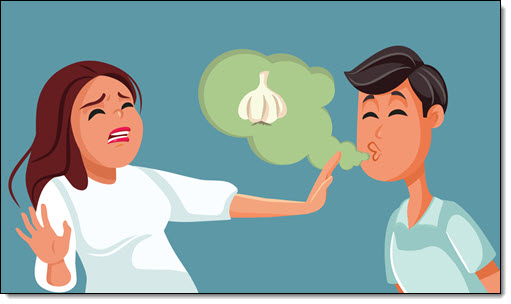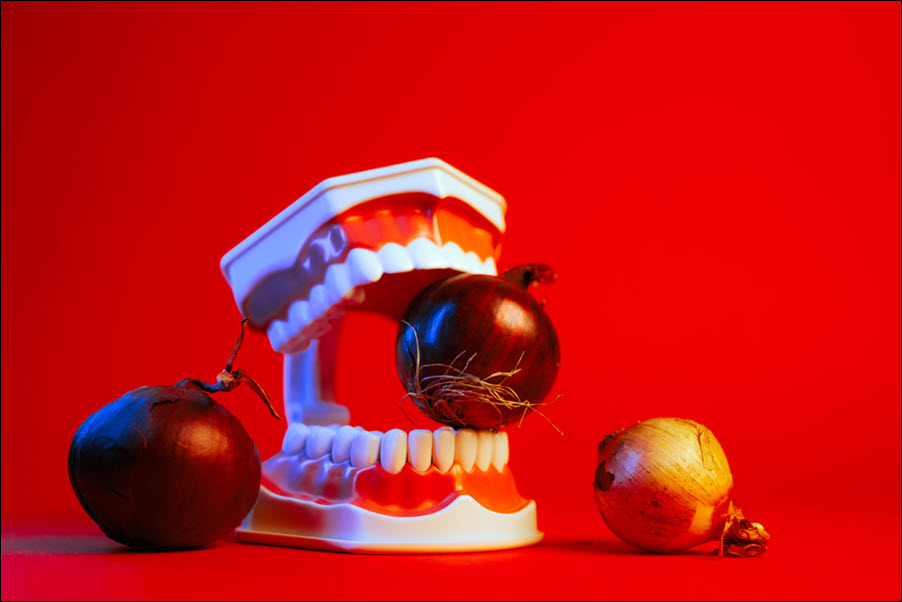Bad breath, or halitosis, is a common problem that affects confidence and social interactions. While poor oral hygiene is often blamed, diet plays a major role. Certain foods release compounds that linger in the mouth and bloodstream, producing strong odors that brushing alone cannot remove. Understanding which foods contribute to bad breath allows patients to make smarter choices and adopt habits that support long-lasting freshness.
Onions and Garlic: Sulfur Compounds at Work
 Onions and garlic are notorious for causing bad breath. These foods release sulfur compounds that travel through the bloodstream after digestion. As a result, odors resurface in the lungs and exit during exhalation, lasting long after a meal. Brushing and rinsing reduce surface odors but cannot remove compounds circulating in the body. For important events, limiting onion and garlic intake helps minimize halitosis. Choosing milder flavoring options, such as herbs and spices, can enhance taste without creating unpleasant aftereffects.
Onions and garlic are notorious for causing bad breath. These foods release sulfur compounds that travel through the bloodstream after digestion. As a result, odors resurface in the lungs and exit during exhalation, lasting long after a meal. Brushing and rinsing reduce surface odors but cannot remove compounds circulating in the body. For important events, limiting onion and garlic intake helps minimize halitosis. Choosing milder flavoring options, such as herbs and spices, can enhance taste without creating unpleasant aftereffects.
Dairy Products and Protein Sources
Cheese, milk, and yogurt support oral health in many ways but also fuel bacterial activity. Sulfur-producing bacteria thrive on proteins, creating unpleasant smells. Patients who notice stronger breath after dairy may benefit from rinsing with water immediately after eating. In some cases, lactose intolerance worsens odor by creating digestive side effects. Lean proteins like poultry or beans can also produce foul breath when particles remain on the tongue. Consistent cleaning of the tongue’s surface helps reduce bacteria and odor buildup.
Spices, Coffee, and Alcohol
Strong spices such as curry and chili powders cling to the mouth, releasing odors for hours. Coffee leaves oily residues on the tongue, amplifying bacterial growth and creating dryness. Alcohol contributes by drying the mouth, reducing saliva flow, and altering bacterial balance. Without adequate saliva, odors intensify. Patients who enjoy these foods and drinks should balance them with plenty of water and consider sugar-free gum to stimulate saliva production. These small steps reduce odors while allowing enjoyment of favorite flavors.
Managing Odor with Smarter Choices
Not all foods cause halitosis. There are many dental-healthy foods. Crunchy fruits and vegetables such as apples, carrots, and celery naturally clean teeth surfaces while stimulating saliva. Drinking water throughout the day flushes bacteria and neutralizes acids. Fresh herbs like parsley and mint mask odors and add a refreshing effect. By incorporating these foods into meals, patients reduce odor intensity naturally. Combining dietary awareness with consistent oral hygiene creates the best results for maintaining fresh breath.
Halitosis often stems from everyday food choices. Onions, garlic, dairy, coffee, and alcohol create lingering odors that routine brushing cannot fully remove. By limiting these triggers, balancing meals with cleansing foods, and maintaining hydration, patients can control bad breath more effectively. Awareness and prevention ensure confidence in every interaction.

